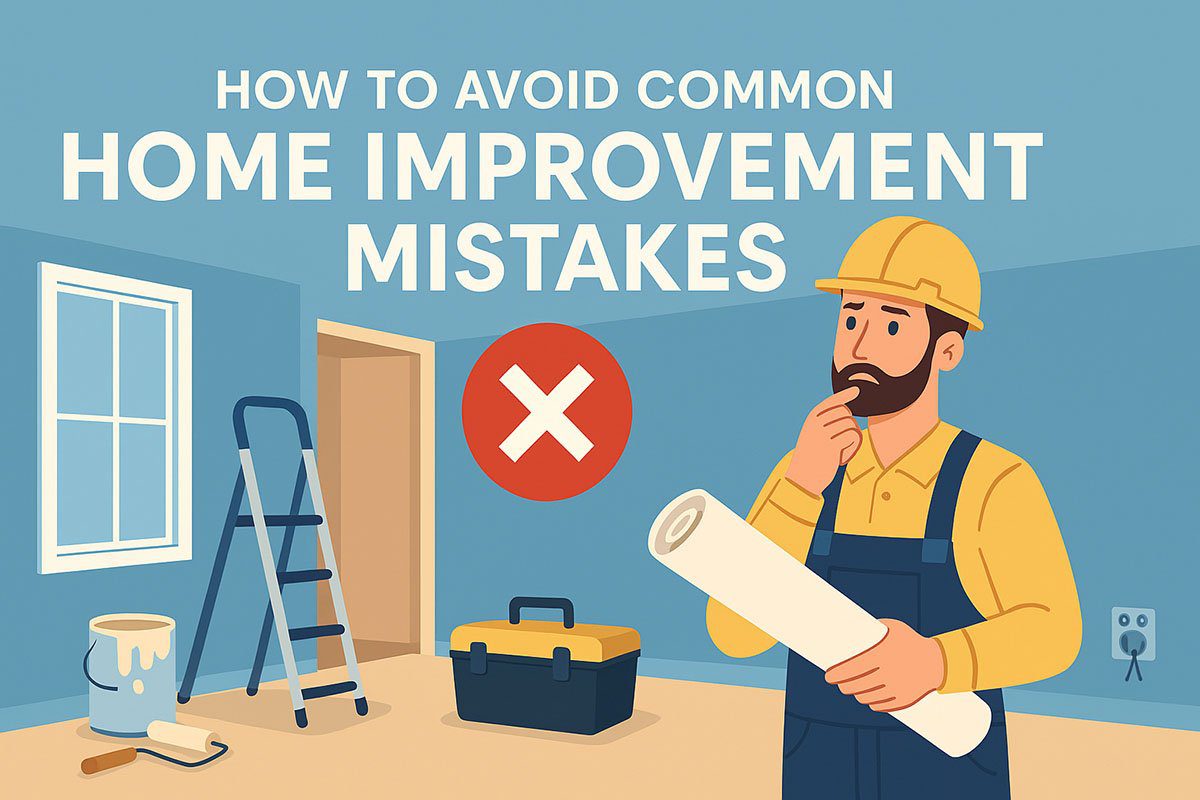Home improvement can be a highly rewarding experience, both personally and financially. Whether you’re revamping a kitchen, adding a fresh coat of paint, or embarking on a complete renovation, these projects can significantly enhance the functionality and aesthetic of your home. However, without proper planning and the right tools, what starts as a weekend project can quickly become a costly headache. For tradespeople, technicians and electrical contractors, understanding and avoiding common pitfalls is essential to delivering high-quality outcomes efficiently.
Underestimating Time and Budget
One of the most frequent mistakes in home improvement is misjudging the time and money required. It’s easy to be optimistic when planning a project, but unexpected issues like hidden water damage, outdated wiring or structural problems can surface once work begins.
To mitigate this risk:
- Make sure your budget always includes a contingency of at least 15–20%.
- Break down the job into phases with realistic timeframes.
- Ensure proper permits are obtained early to avoid delays.
Accurate estimates not only keep clients satisfied but also help maintain profitability and resource planning for trades professionals.
Using the Wrong Tools for the Job
Using inappropriate or low-quality tools can compromise the finish, increase the risk of injury, and slow down progress. For example, using a general-purpose drill when a rotary hammer is needed can damage surfaces and reduce efficiency.
Professionals should ensure they:
- Choose tools specific to the task at hand.
- Regularly maintain equipment for peak performance.
- Invest in precision tools when accuracy is essential, such as in PCB soldering or when working with delicate electrical components.
In the long run, high-quality tools pay for themselves because they last longer and produce better results. If you’re unsure where to source reliable gear, you can find everything you need with quality trade tool supplies tailored to professionals.
Skipping Proper Surface Preparation
A flawless finish often depends on what happens before any paint is applied or tiles are laid. Rushing or skipping surface prep is a critical error. Dust, grease, old paint, or uneven substrates can undermine even the best materials and craftsmanship.
Best practices include:
- Cleaning and sanding surfaces before painting or sealing.
- Using primers where necessary for adhesion and durability.
- Levelling and waterproofing surfaces in bathrooms or kitchens.
Technicians know that prepping properly prevents callbacks and enhances reputation through consistent results.
Overlooking Safety Measures
No project should compromise on safety. Ignoring safety guidelines not only puts lives at risk but may also lead to costly legal and insurance repercussions.
Always:
- Use Personal Protective Equipment (PPE) appropriate to the task.
- Verify all power tools are compliant with safety standards and properly earthed.
- Disconnect mains power when working on electrical systems.
- Keep first aid kits and fire extinguishers readily accessible.
Tradespeople working in client homes must be especially vigilant as unfamiliar environments may conceal hazards.
Poor Measurement and Planning
The adage “measure twice, cut once” is still relevant today. Inaccurate measurements can lead to wasted materials, poor fit, and structural flaws.
To improve accuracy:
- Use digital measuring tools or laser measurers where possible.
- Double-check all calculations before ordering materials.
Plan layouts meticulously, especially when working in older homes where angles and walls may not be perfectly square.
In projects involving electrical layouts or plumbing, precise planning also ensures compliance with local building codes.
Choosing Style Over Function
Clients may request design elements that look great in magazines but are impractical or expensive to maintain in real life. As a contractor or tradesperson, it’s crucial to guide them with sound advice on balancing form and function.
Suggestions include:
- Recommending materials that are both attractive and durable.
- Highlighting the benefits of energy-efficient fixtures.
- Advising on storage and usability in kitchen and bathroom layouts.
Functionality, especially in high-use areas, often dictates long-term satisfaction more than aesthetic choices alone.
Ignoring Manufacturer Instructions
Even experienced professionals can fall into the trap of “going by feel” instead of reading product guidelines. Whether it’s applying adhesives, installing fasteners, or configuring programmable tools, ignoring instructions can void warranties and lead to failures.
Always:
- Refer to the manufacturer’s specifications for correct installation and usage.
- Keep instruction manuals and technical datasheets on hand.
- Stay current with training or certifications where required.
It’s a small step that safeguards your reputation and ensures compliance with product warranties.
Enhancing Client Trust and Job Satisfaction
Successful home improvement is as much about foresight and planning as it is about craftsmanship. Avoiding these common mistakes not only saves time and money but also enhances client trust and job satisfaction. By being well-prepared, using the correct tools, and adhering to best practices, tradespeople and technicians can deliver superior results consistently.
For more insightful articles related to home improvement, please visit Bloghart.

